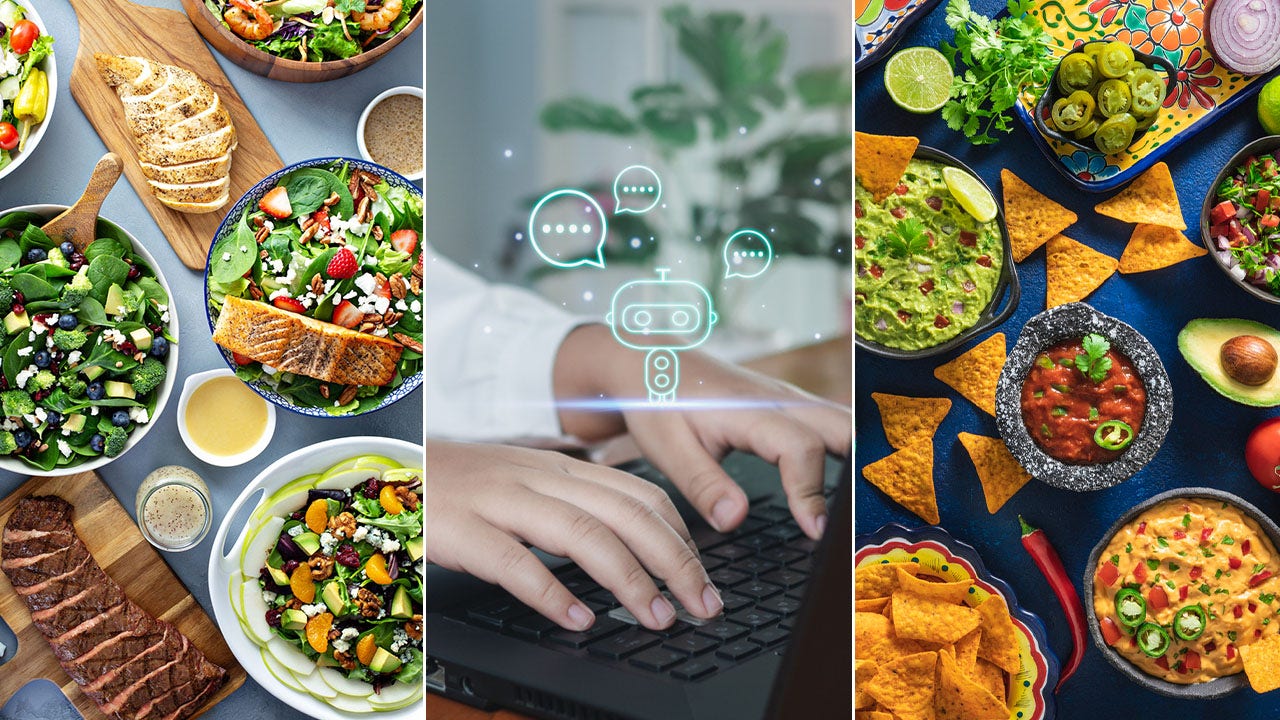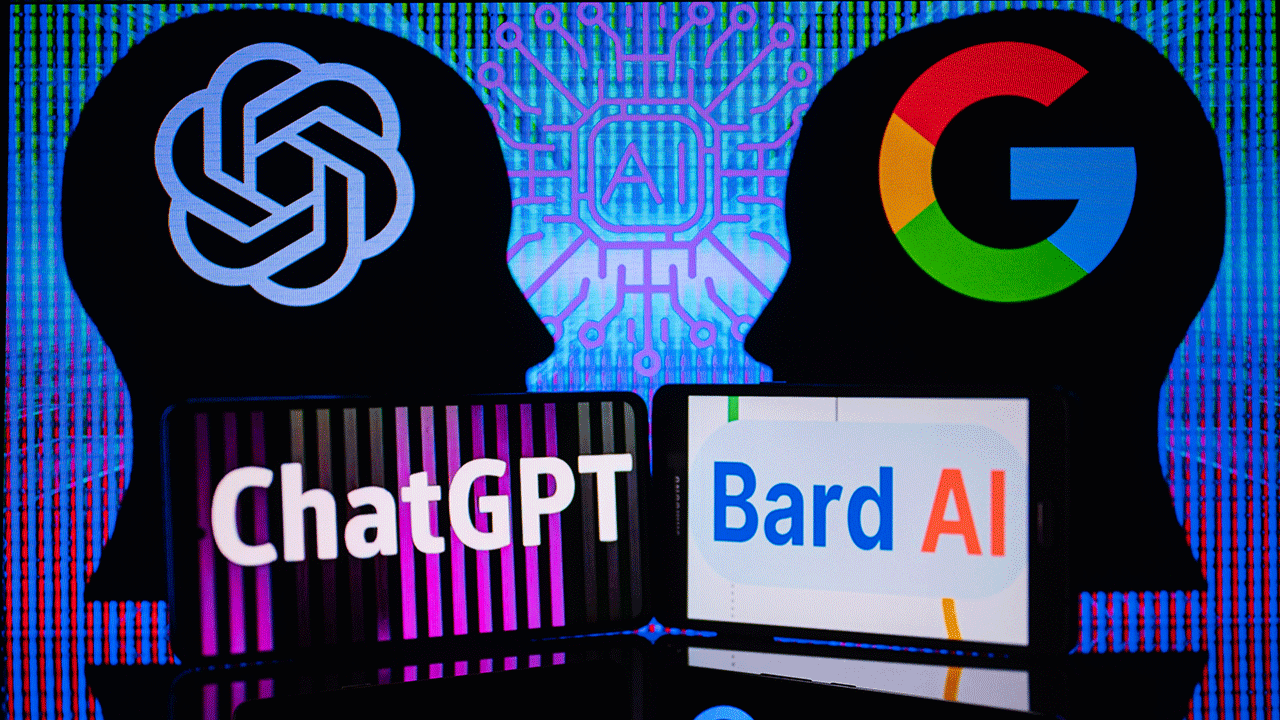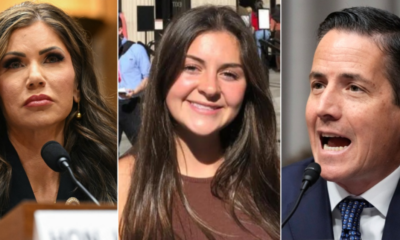Health
ChatGPT, meal planning and food allergies: Study measured ‘robo diet’ safety as experts sound warnings

As artificial intelligence has made its way into everything from content creation to health care, could “robo recipes” be next on the menu?
A Polish study explored AI’s potential in meal planning — specifically for people with food allergies — with mixed results.
Researchers from the Poznań University of Economics and Business in Poland entered prompts into ChatGPT — the AI-powered large language model (LLM) developed by OpenAI — to get meal recommendations for specific food allergies.
CHATGPT LIFE HACKS: HOW USERS ARE SPAWNING GROCERY LISTS FROM AI-GENERATED RECIPES AND MEAL PLANS
“ChatGPT — at least in the version that was tested in January 2023 — generally produced balanced diet plans for people with food allergies, but not all of them were safe,” Paweł Niszczota, lead researcher of the study, which was published in the journal Nutrition, told Fox News Digital.
Each year, some 30,000 people visit the emergency room with food allergy reactions and 150 to 200 die from them, studies have shown.
AI’s potential for meal planning — specifically for people with food allergies — was explored in a new study with mixed results. (iStock)
With this risk in mind, the researchers set out to determine the safety of using ChatGPT to generate recipe suggestions.
“ChatGPT can be a helpful tool for food professionals, such as dietitians, who can identify when it is misleading,” Niszczota said.
“Lay people might sometimes wrongly infer that ChatGPT or similar models are correct, only because they appear confident in their responses.”
“I’ve seen firsthand how it helped users request endless variations of diet plans without worrying about the cost of visiting a nutritionist.”
The researchers focused on 14 food allergens.
These included cereals containing gluten (wheat, rye, barley and oats), eggs, fish, crustaceans (such as prawns, crabs and lobsters), mollusks (such as mussels and oysters), peanuts, soybeans, milk and dairy products, nuts (such as almonds, hazelnuts and walnuts), celery, mustard, sesame, sulfur dioxide and sulphites (at a concentration of more than 10 parts per million) and lupin, according to the published discussion of the findings in the journal Nutrition.

ChatGPT included almond milk in nut-free diets — which potentially could be very dangerous for people with nut allergies. (iStock)
They entered the prompts into ChatGPT on January 28, based on four different food restrictions.
The chatbot generated responses based on its built-in algorithms and the vast amount of dietary information published on the internet.
Next, a qualified dietitian with a master’s degree in human nutrition assessed the responses.
What ChatGPT did well
Piyush Tripathi, a lead engineer at Square in San Francisco, California, used another large language model called BERT to create his own diet app, Gainguy. (He was not involved in the Polish study.)
He said he sees flexibility as the biggest advantage in using LLMs for meal planning.
“I’ve seen firsthand how it helped users request endless variations of diet plans without worrying about the cost of visiting a nutritionist,” he told Fox News Digital.
TEENS ARE TURNING TO SNAPCHAT’S ‘MY AI’ FOR MENTAL HEALTH SUPPORT — WHICH DOCTORS WARN AGAINST
“By analyzing ingredient lists, nutritional data and user preferences, ChatGPT can offer alternative ingredient suggestions and provide detailed information on suitable food options,” Tripathi continued.
“Plus, ChatGPT-like technology is available 24/7 and can respond to queries and conversations instantly.”
The study authors also noted some specific strengths of the AI-generated suggestions.

“Lay people might sometimes wrongly infer that ChatGPT or similar models are correct, only because they appear confident in their responses,” the researcher said. (Gabby Jones/Bloomberg via Getty Images)
“Meals were formulated in accordance with the basic recommendations indicated in different food-based dietary guidelines, such as limiting meat consumption in favor of fish and poultry or having vegetables or fruits in every meal,” they stated.
The responses also included some helpful tips and guidance, such as noting the importance of reading labels carefully.
Potential pitfalls of ChatGPT for meal planning
The Polish study’s primary criterion was safety, which measured whether the specified food allergen was left out of the suggested meal.
“In four out of 56 cases (7.1%), the meal included a forbidden allergen (nuts in a nut-free diet),” Niszczota told Fox News Digital.
Specifically, ChatGPT included almond milk in nut-free diets, which potentially could be very dangerous for people with nut allergies.
CHATGPT FOUND TO GIVE BETTER MEDICAL ADVICE THAN REAL DOCTORS IN BLIND STUDY: ‘THIS WILL BE A GAME CHANGER’
Another concern was that some of the diets were too low in calories to provide the necessary level of nutrients, a discussion of the findings noted.
“In most of the proposed menus, only a general statement on the supervision of a health professional was given, with no warning about a significant calorie restriction,” the authors wrote.
Lack of variety in the meals was another issue, which could be a barrier to people sticking consistently to recommended diets.

Based on this single study, Niszczota confirmed there is some risk that large language models can produce nutritional advice that is dangerous for people who suffer from food allergies. (iStock)
“The version [of ChatGPT] used in the study produced monotonous menus with frequent repetition of foods, which would probably not be followed for a long period,” noted Niszczota.
Based on this single study, he confirmed there is some risk that large language models can produce nutritional advice that is dangerous for people suffering from food allergies.
“Another risk is that people might take a mental shortcut, thinking that dietary advice from generative AI is accurate because it is delivered in a confident manner,” he warned.
ChatGPT also lacks the capability to include images in its interactions — which Niszczota believes would make it more useful for meal recommendations.
“If a person with allergies follows a meal plan generated by a chatbot and suffers a reaction, it’s not clear who should be held liable for any damages.”
“For example, to help track their diets, people might take photos of their meals and ask AI for feedback,” he said.
Any potential legal implications are also unclear, noted Tripathi.
“If a person with allergies follows a meal plan generated by a chatbot and suffers a reaction, it’s not clear who should be held liable for any damages,” he said.
Study included some limitations
Since January 2023, when the study was conducted, ChatGPT has been updated a total of seven times, according to OpenAI’s release notes.
That means someone entering the same prompts today could receive very different responses.
The relatively small number of prompts also limited the results, Niszczota said.
“Since we conducted our analysis, OpenAI [enabled] the ability to access ChatGPT via an API, which allows researchers to ask the same prompts — or variations of prompts — numerous times,” he explained.

The researcher noted that his team only relied on ChatGPT — but there are other large language models from other companies, such as Google Bard, that should be assessed, he said. (Jonathan Raa/NurPhoto via Getty Images)
“Future studies will capitalize on this and become more valid.”
Additionally, in the study, there were no further interactions after ChatGPT provided its responses.
“In reality, interactions with large language models consist of multiple prompts and responses,” Niszczota pointed out. “These might produce different outputs. For instance, in the course of dialogue with ChatGPT, we could attain less monotonous diets.”
CHATGPT AND HEALTH CARE: COULD THE AI CHATBOT CHANGE THE PATIENT EXPERIENCE?
The researcher also noted that his team only relied on ChatGPT, but there are other large language models from other companies, such as Google Bard, that should be assessed.
“More importantly, longitudinal studies are needed to identify how people actually use dietary advice from large language models,” he added.
Take AI dietary advice with a grain of salt, experts say
When using ChatGPT for personalized diet advice, Tripathi said it is important to provide accurate and complete information about your health condition, dietary preferences and lifestyle habits.
Even after doing that, however, he said an LLM’s food recommendations can’t rival a human’s input.

The researchers focused on 14 food allergens, including gluten, eggs, fish, crustaceans, peanuts, soybeans, milk and dairy products, nuts, celery, mustard, sesame, sulfur dioxide and sulphites, and lupin. (iStock)
“Chatbots lack the ability to interact with individuals and understand their specific needs and concerns,” he said.
“This can lead to a lack of empathy and understanding, which can be important when dealing with people with allergies.”
CLICK HERE TO SIGN UP FOR OUR HEALTH NEWSLETTER
For example, an AI model may not be able to take into account the severity of the allergy or an individual’s health conditions, Tripathi warned.
Above all, he maintained that the meals served up by ChatGPT should not be considered a substitute for professional medical advice.

Health
Jennifer Hudson Lost 80-Lbs Without Depriving Herself—Learn Her Secrets

Sign Up
Create a free account to access exclusive content, play games, solve puzzles, test your pop-culture knowledge and receive special offers.
Already have an account? Login
Use left and right arrow keys to navigate between menu items.
Use escape to exit the menu.
Health
Kennedy’s Plan for the Drug Crisis: A Network of ‘Healing Farms’

Though Mr. Kennedy’s embrace of recovery farms may be novel, the concept stretches back almost a century. In 1935, the government opened the United States Narcotic Farm in Lexington, Ky., to research and treat addiction. Over the years, residents included Chet Baker and William S. Burroughs (who portrayed the institution in his novel, “Junkie: Confessions of an Unredeemed Drug Addict”). The program had high relapse rates and was tainted by drug experiments on human subjects. By 1975, as local treatment centers began to proliferate around the country, the program closed.
In America, therapeutic communities for addiction treatment became popular in the 1960s and ’70s. Some, like Synanon, became notorious for cultlike, abusive environments. There are now perhaps 3,000 worldwide, researchers estimate, including one that Mr. Kennedy has also praised — San Patrignano, an Italian program whose centerpiece is a highly regarded bakery, staffed by residents.
“If we do go down the road of large government-funded therapeutic communities, I’d want to see some oversight to ensure they live up to modern standards,” said Dr. Sabet, who is now president of the Foundation for Drug Policy Solutions. “We should get rid of the false dichotomy, too, between these approaches and medications, since we know they can work together for some people.”
Should Mr. Kennedy be confirmed, his authority to establish healing farms would be uncertain. Building federal treatment farms in “depressed rural areas,” as he said in his documentary, presumably on public land, would hit political and legal roadblocks. Fully legalizing and taxing cannabis to pay for the farms would require congressional action.
In the concluding moments of the documentary, Mr. Kennedy invoked Carl Jung, the Swiss psychiatrist whose views on spirituality influenced Alcoholics Anonymous. Dr. Jung, he said, felt that “people who believed in God got better faster and that their recovery was more durable and enduring than people who didn’t.”
Health
Children exposed to higher fluoride levels found to have lower IQs, study reveals

The debate about the benefits and risks of fluoride is ongoing, as RFK Jr. — incoming President Trump’s pick for HHS secretary — pushes to remove it from the U.S. water supply.
“Fluoride is an industrial waste associated with arthritis, bone fractures, bone cancer, IQ loss, neurodevelopmental disorders and thyroid disease,” RFK wrote in a post on X in November.
A new study published in JAMA Pediatrics on Jan. 6 found another correlation between fluoride exposure and children’s IQs.
RFK JR. CALLS FOR REMOVAL OF FLUORIDE FROM DRINKING WATER, SPARKING DEBATE
Study co-author Kyla Taylor, PhD, who is based in North Carolina, noted that fluoridated water has been used “for decades” to reduce dental cavities and improve oral health.
Fluoride exposure has been linked to a variety of negative health effects, yet benefits oral health. (iStock)
“However, there is concern that pregnant women and children are getting fluoride from many sources, including drinking water, water-added foods and beverages, teas, toothpaste, floss and mouthwash, and that their total fluoride exposure is too high and may affect fetal, infant and child neurodevelopment,” she told Fox News Digital.
The new research, led by scientists at the National Institute of Environmental Health Sciences (NIEHS), analyzed 74 epidemiological studies on children’s IQ and fluoride exposure.
FEDERAL JUDGE ORDERS EPA FURTHER REGULATE FLUORIDE IN DRINKING WATER DUE TO CONCERNS OVER LOWERED IQ IN KIDS
The studies measured fluoride in drinking water and urine across 10 countries, including Canada, China, Denmark, India, Iran, Mexico, Pakistan, New Zealand, Spain and Taiwan. (None were conducted in the U.S.)
The meta-analysis found a “statistically significant association” between higher fluoride exposure and lower children’s IQ scores, according to Taylor.
“[It showed] that the more fluoride a child is exposed to, the more likely that child’s IQ will be lower than if they were not exposed,” she said.

Scientists found a “statistically significant association” between higher fluoride exposure and lower children’s IQ scores. (iStock)
These results were consistent with six previous meta-analyses, all of which reported the same “statistically significant inverse associations” between fluoride exposure and children’s IQs, Taylor emphasized.
The research found that for every 1mg/L increase in urinary fluoride, there was a 1.63-point decrease in IQ.
‘Safe’ exposure levels
The World Health Organization (WHO) has established 1.5mg/L as the “upper safe limit” of fluoride in drinking water.
“There is concern that pregnant women and children are getting fluoride from many sources.”
Meanwhile, the U.S. Public Health Service recommends a fluoride concentration of 0.7 mg/L in drinking water.
“There was not enough data to determine if 0.7 mg/L of fluoride exposure in drinking water affected children’s IQs,” Taylor noted.
FDA BANS RED FOOD DYE DUE TO POTENTIAL CANCER RISK
Higher levels of the chemical can be found in wells and community water serving nearly three million people in the U.S., the researcher noted.
She encouraged pregnant women and parents of small children to be mindful of their total fluoride intake.

Nearly three million people have access to wells and community water with fluoride levels above the levels suggested by the World Health Organization. (iStock)
“If their water is fluoridated, they may wish to replace tap water with low-fluoride bottled water, like purified water, and limit exposure from other sources, such as dental products or black tea,” she said.
“Parents can use low-fluoride bottled water to mix with powdered infant formula and limit use of fluoridated toothpaste by young children.”
For more Health articles, visit www.foxnews.com/health.
While the research did not intend to address broader public health implications of water fluoridation in the U.S., Taylor suggested that the findings could help inform future research into the impact of fluoride on children’s health.
Dental health expert shares cautions
In response to this study and other previous research, Dr. Ellie Phillips, DDS, an oral health educator based in Austin, Texas, told Fox News Digital that she does not support water fluoridation.

The study researcher encouraged parents of small children to be mindful of their total fluoride intake. (iStock)
“I join those who vehemently oppose public water fluoridation, and I question why our water supplies are still fluoridated in the 21st century,” she wrote in an email.
“There are non-fluoridated cities and countries where the public enjoy high levels of oral health, which in some cases appear better than those that are fluoridated.”
CLICK HERE TO SIGN UP FOR OUR HEALTH NEWSLETTER
Phillips called the fluoride debate “confusing” even among dentists, as the American Dental Association (ADA) advocates for fluoride use for cavity prevention through water fluoridation, toothpaste and mouthwash — “sometimes in high concentrations.”

Fluoride is used in water, toothpaste and mouthwash to help prevent cavities. (iStock)
“[But] biologic (holistic) dentists generally encourage their patients to fear fluoride and avoid its use entirely, even if their teeth are ravaged by tooth decay,” she said.
“Topical fluoride is beneficial, while systemic consumption poses risks.”
Phillips encouraged the public to consider varying fluoride compounds, the effect of different concentrations and the “extreme difference” between applying fluoride topically and ingesting it.
“Topical fluoride is beneficial, while systemic consumption poses risks,” she cautioned.
“Individuals must take charge of their own oral health using natural and informed strategies.”
The study received funding from the National Institute of Environmental Health Sciences (NIEHS), the National Institutes of Health (NIH) and the Intramural Research Program.
-
/cdn.vox-cdn.com/uploads/chorus_asset/file/25822586/STK169_ZUCKERBERG_MAGA_STKS491_CVIRGINIA_A.jpg)
/cdn.vox-cdn.com/uploads/chorus_asset/file/25822586/STK169_ZUCKERBERG_MAGA_STKS491_CVIRGINIA_A.jpg) Technology1 week ago
Technology1 week agoMeta is highlighting a splintering global approach to online speech
-

 Science1 week ago
Science1 week agoMetro will offer free rides in L.A. through Sunday due to fires
-
/cdn.vox-cdn.com/uploads/chorus_asset/file/23935558/acastro_STK103__01.jpg)
/cdn.vox-cdn.com/uploads/chorus_asset/file/23935558/acastro_STK103__01.jpg) Technology7 days ago
Technology7 days agoAmazon Prime will shut down its clothing try-on program
-

 News1 week ago
News1 week agoMapping the Damage From the Palisades Fire
-
/cdn.vox-cdn.com/uploads/chorus_asset/file/25826211/lorealcellbioprint.jpg)
/cdn.vox-cdn.com/uploads/chorus_asset/file/25826211/lorealcellbioprint.jpg) Technology7 days ago
Technology7 days agoL’Oréal’s new skincare gadget told me I should try retinol
-
/cdn.vox-cdn.com/uploads/chorus_asset/file/25832751/2192581677.jpg)
/cdn.vox-cdn.com/uploads/chorus_asset/file/25832751/2192581677.jpg) Technology3 days ago
Technology3 days agoSuper Bowl LIX will stream for free on Tubi
-

 Business5 days ago
Business5 days agoWhy TikTok Users Are Downloading ‘Red Note,’ the Chinese App
-
/cdn.vox-cdn.com/uploads/chorus_asset/file/25835602/Switch_DonkeyKongCountryReturnsHD_scrn_19.png)
/cdn.vox-cdn.com/uploads/chorus_asset/file/25835602/Switch_DonkeyKongCountryReturnsHD_scrn_19.png) Technology1 day ago
Technology1 day agoNintendo omits original Donkey Kong Country Returns team from the remaster’s credits



















